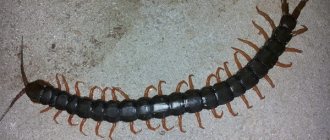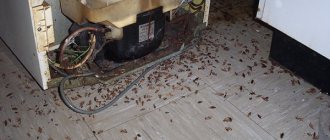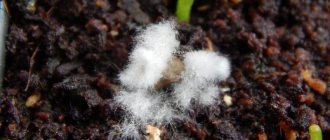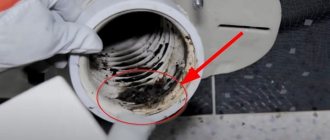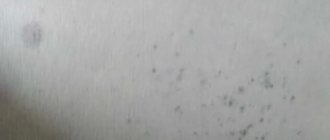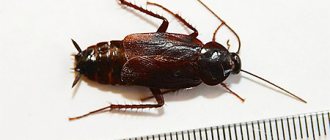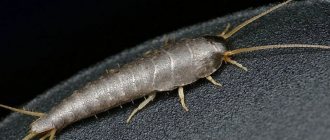Soldier bug (Pyrrhocoris apterus), also called the red bug or cossack, is a terrestrial invertebrate from the family Red bug and the order Hemiptera.
It reaches 11 mm in length and has a variegated color: black back and elytral plates with a complex red, less often orange, pattern. There are many varieties of patterns; scientists associate the type of pattern on the back with the ecological situation of the area where it was located as a larva.
Kozachek has large, complex, black eyes, a piercing-sucking type of mouthparts, and a proboscis, normally hidden under the body, capable of piercing the chitinous cover of invertebrates. The wingless red bug has a gland in its chest that secretes a strong-smelling secretion and walking-type legs. Their black antennae consist of four segments.
Habitat
This species has a very wide habitat. It can be found throughout the territory, from the Arctic Circle to tropical forests. It inhabits all of temperate Eurasia and northern Africa, and it has also been introduced to North America. In Russia it is present throughout the territory.
What does it eat?
Red bugs and their larvae consume cell sap, using their proboscis to pierce the hard shell of the leaf and gain access to the nutritious sap, without disdaining any plant growing in the garden. It also comes with the seeds and fruits of some trees and shrubs. In rare cases, the wingless red bug can feast on the corpses of small invertebrates and even resort to cannibalism.
Where is it distributed?
The soldier bug is widespread throughout Eurasia, northern Africa and the United States. Countries with a temperate climate are favorable for insect reproduction.
Bedbug habitat:
- under the bark of trees;
- on stumps;
- in piles of dry grass and leaves;
- at the foundations of houses, baths, gazebos and other outbuildings;
- in the fence and its foundation.
kath_gruendisorder_vortexentomologist_arina
During hibernation, insects are found under heaps of garbage, in humus, in trees - under the bark or in hollows.
Signs of appearance
The appearance of a red soldier in your garden can be signaled by such phenomena as:
- drying of leaves of umbrella crops;
- the appearance of yellow spots on cabbage leaves;
- falling of buds and flowers;
- curling and drying of root crop tops;
- developmental lag of young seedlings;
- drying of berries.
The easiest way to find signs of damage is in crops such as cabbage (you should pay attention to large yellow spots on the leaves), coriander or dill (they begin to dry out quickly, since these varieties belong to the umbrella family), carrots and beets are inhibited in their development, leaf blades become deformed and wither.
Severely affected crops that cannot be saved must be removed and destroyed. They may contain larvae, which may soon infect surrounding crops.
Thanks to the color of bedbugs, they are easy to spot with the naked eye when they crawl out to bask in the sun. This is their common habit.
External characteristics
The soldier bug is a ground bug that belongs to the red bug family. The length of its body can vary from 7 to 11 mm. This insect has a characteristic color, so it is impossible to confuse it with other species.
What do adults look like?
On the back of an adult soldier bug there is a peculiar black and red ornament.
Its mouth organ looks like a proboscis, with which it pierces the stem of a plant and sucks the juice out of it. In a calm state, it is located horizontally and is located at the bottom of the head. With its help, the parasite can even pierce the chitinous cover of dead insects in order to get enough of the liquid remaining in them.
Soldier bug larva
Larvae emerge from eggs in early spring. At first they feed on small weeds and the juice of young shoots of alfalfa. This is due to the fact that young individuals have a weak short proboscis that cannot pierce harder stems. The larva is distinguished by a uniform color of the back - it is red without black inclusions.
You can find larvae on birch trees, where they sit absolutely motionless and wait to molt. The sap of this tree is a favorite delicacy of young animals. The location of their colonies is characterized by the presence of dense, rough bark and a complete absence of leaves.
What do eggs look like?
Soldier bugs reproduce quite actively. They lay their eggs, as a rule, in the internal tissues of the plants they feed on. This can be a trunk, leaves, cuttings, stems, etc. The eggs are oval in shape, white in color and have a transparent shell.
Soldier bugs reproduce intensively and quickly. An adult female can lay about 30 eggs at a time, which turn into larvae within a week and a half.
The time from December to February is the hibernation period for these insects. They choose a place for wintering in advance. It must be dry and warm. Most often, these are cracks in old fences, tree bark that has fallen away from the trunk, boards stacked on top of each other in a barn or on the street, and various wooden buildings.
In spring, large concentrations of soldiers can be found in the places or plants on which they overwinter. In summer they go out into open areas where they bask in the sun.
Reproduction
The breeding period of soldier bugs does not take much time. The mating process occurs in a rather strange way. Two Cossacks cling together with the back of their body and move without disengaging for some time. After this, the female places them inside the plants that she feeds on at this time. One oviposition consists of 20-30 small yellowish eggs and can be located in any above-ground part of the plant.
Larvae
The larvae emerge from the eggs 10-12 days after the eggs are laid; they are small in size and uniformly colored red. They, like adults, use cell sap for nutrition. They often drink the sap of birch, legumes and young shoots, both cultivated varieties and weeds.
The larvae are clearly visible in the spring on the birch bark, where they crawl out to bask in the sun's rays.
What do red bugs look like?
External signs of soldiers allow them to be distinguished from other insects:
- characteristic body color (deep red shades);
- original black ornament decorating the shell;
- a type of toy soldier - a yellow body and black patterns on the wings.
Although red bugs have a striking appearance, they are confused with firefighters. The differences between these insects are significant. A soldier is still a bug, a fireman is a real bug. The body of a firefighter is oblong, while the body of a bug is oval and flattened.
The soldier is a harmful insect that cannot fly and spreads an unpleasant odor. A fireman protects plants from many pests. It has a bright red or orange belly and completely black or dark gray wings. The beetle can fly - when a fireman sees a person, he instantly takes off.
Harm or benefit of a bug
Despite the fact that until recently the soldier bug was considered harmless to gardens, today science has proven that it is a common pest that brings many problems to farmers and gardeners, eating their gardens and killing young shoots.
After their appearance, the leaves become bent, the shoots do not grow, adult plants become covered with spots and may even die if a large colony has settled in the garden. Due to damage to green cells, photosynthetic capacity decreases, which means the amount of absorbed substances decreases and the yield decreases. Cossacks can do especially a lot of harm to vineyards, where they are most often found.
Kozachek can feed on both stems and fruits of grapes, causing enormous damage to the vineyard. Fortunately, we can say with confidence that this insect is completely harmless to the health of humans and animals, because it does not settle in houses, it can bite a person only in extreme cases, it does not carry any dangerous diseases, bites do not cause allergic reactions, so you should be afraid of the Cossack not worth it.
Soldier bugs on the property and in the apartment - how to get rid of them?
Bug soldiers are also popularly called firefighters and standard bearers. Children really like these beautiful little bugs, just like ladybugs, because they have very bright, elegant, friendly colors. Rarely does anyone ask: are red bugs dangerous or perhaps toxic? Are they poisonous? Do we need to fight them?
We have useful tips for you
The name of the insect in Latin is Pyrrhocoris apterus. The beetle is called the sodatik because of its bright red shield. In the spring, when the sun begins to shine longer, soldier bugs emerge in large numbers from their winter homes, which they usually make under leaves or pieces of bark, to awaken from hibernation in heated places such as rocks or tree trunks.
There are more than 400 species of fire beetles in the world. Of these, only five different species live in Europe.
These are types of bedbugs. They do not have chewing organs like classic beetles, but only a proboscis through which liquid food can be absorbed. In addition, only a few specimens are capable of flight, as the wings are usually poorly developed. An ordinary soldier bug is about one centimeter in size. Depending on the variety, the color may vary because pigment development is highly dependent on temperature. After hatching from the eggs, the so-called nymphs molt five times. Black spots of color develop late. Their final color is achieved only in adulthood.
Soldier bugs send signals to their fellows using pheromones. When danger threatens, they release alarming aromas, and the community dissolves in space in a matter of seconds.
What is it often confused with?
The soldier bug is often confused with the firefighter beetle, although they are not very similar to each other.
The fire beetle (Cantharis rustica) is a species of soft-bodied beetle found throughout southern Russia.
This beetle is one and a half to two times longer than the soldier and has a different color (brown elytra and an orange abdomen), they are useful for humans, because they feed on eggs and young insects, thus exterminating many pests. These beetles fly beautifully and also lay eggs in rotten wood. In fact, the soldier is not a beetle at all, since beetles belong to the order Coleoptera, and he belongs to the order Hemiptera.
Why are these insects so often confused? It's very simple, people confuse the soldier bug with the fireman beetle because of the fiery red color of its wing covers.
Life cycle
The lifespan of the wingless bug is 12–14 months. When living in warm regions, two generations of insects appear, in cold regions - one.
The soldier larva does not have such a bright cover
By the end of August, the soldiers' metabolism slows down, i.e. they are preparing for hibernation - suspended animation. After going to sleep, insects survive due to the nutrients accumulated over the summer period and slow metabolism.
The awakening of bedbugs occurs in March - April, as soon as the sun begins to warm the earth and the first vegetation appears. Some young individuals and females cannot withstand the spring cold and die. In May, adult female bedbugs lay eggs. The process of insect formation takes place in several stages: egg – larva – bug. Newly formed females continue breeding in mid-late June.
Fighting methods
So, after you have found one or more signs of the appearance of this insect in your garden, you need to make sure that it is a soldier bug by finding one or more representatives in your area. This is very easy to do thanks to their color. After this, it is worth starting to destroy the pest.
Traditional methods
There is no point in immediately starting heavy artillery using pesticides. It’s better to start with softer traditional methods that are less likely to damage your agrocenosis.
The simplest and most commonly used:
Onion decoction (250 grams per bucket of water, the norm per square meter of soil infested with the pest), wood ash (200 grams per bucket), mustard powder (100 grams per bucket) and laundry soap (1 piece).
This solution should be sprayed on areas with infected plants 1-2 times a week .
Another effective way to combat this pest can be to plant some types of plants on the site, for example black cohosh (commonly called black cohosh).
REFERENCE! This plant effectively repels most types of bedbugs and some other pests; moreover, this species is very beautiful and can serve a decorative function.
Another effective way to exterminate bedbugs is to install a catching belt . A sticky strip wraps around the base of the tree trunk, where the soldier bug is most often found.
Products and chemicals
If folk methods did not help you get rid of the uninvited guest, then it’s time to move on to stronger means. One of the most harmless products for your garden is the drug “Bankol” . It can be purchased at any garden supply store. It will help get rid of adults and larvae, as well as many other types of phyto pests.
ATTENTION! Any chemical is harmful to humans, so you need to strictly follow the instructions, observe the processing time, and after using the drug, do not allow children and pets to the treated areas, do not be there yourself, and use protection during processing (gloves, a raincoat and a respirator). This drug should be used to spot treat infected areas of crops.
You can also use more serious insecticides, such as Karbofos and Aktara.
Natural enemies
The soldier bug has a gland on its back that produces an unpleasant-smelling secretion, a warning color and a bitter taste; therefore, it is not the most attractive delicacy, so a bird can only eat a bug very rarely.
This representative of hemipterans is quite large, so it also has no enemies among insects, except that ants may not disdain a dead bug. However, interspecific cannibalism occurs in the order Hemiptera, especially during the wintering period. Therefore, we can say that the natural enemies of soldier bugs are themselves and humans.
Wintering - those who survived
For wintering, bedbugs choose a warm and dry place, for example, under your baseboard or on suspended ceilings. The places where pests hide are most often various kinds of crevices in wooden buildings or parts of exfoliated bark. Therefore, do not be lazy and treat the first of them with an insecticide, and scrape the second with a wooden scraper and burn.
With the arrival of spring, when the soldiers run out in neat rows to bask in the sun, then they can be destroyed!
Maybe some of you had an interesting case of fighting soldier bugs, write to us about it in the comments.
Prevention
The invasion of these pests can be easily avoided. You just need to prepare the site in advance and follow a few simple rules. Firstly, it is very important to remove weeds in a timely manner and trim the lawn at least once a month; it is advisable to burn all cut and torn grass in order to avoid the spread of the bug, if there are already ovipositors in the grass.
Secondly, it is necessary to uproot old stumps, because this is where the Cossack often settles. You also need to install a fishing belt at the base of the trees in advance. It is necessary to plant legumes separately from other crops, as they often become the starting point of infection, since they are a refuge for Cossacks during the harsh winter months. It is also worth treating the wintering areas of these insects annually with an insecticide (you can use dichlorvos).
Questions
Natalia, 31 years old, Astrakhan
What is the lifespan of an insect?
The soldier lives from 6 to 12 months.
Igor, 43 years old, Sochi
In winter, several insects corresponding to the description of the soldiers appeared in the house. Should any action be taken?
If these are really soldiers, then they will not cause harm, most likely they will not survive. But in a room with a warm and humid microclimate, indoor plants can be attacked. In this case, it is better to destroy them using folk remedies.
Svetlana, 52 years old, Volgograd
Why did the insect get the nickname soldier?
The main difference between this species and others is that individuals cluster into peculiar divisions and accumulate in one place.
Ch. Editor Lyudmila
The soldier bug poses absolutely no danger to people. But for plants, this funny little bug is far from harmless. Insect colonies can cause enormous damage to green spaces in gardens and vegetable gardens.
Description
These insects are known to biology as “white-winged red bugs”, they are about 1 cm in length (according to the description, an adult can reach 12 mm in length). Abroad, they are called “fire beetles” due to the fact that the red-brown color on the back immediately attracts the eye, and the fancy black ornament does not allow these beetles to be confused with other species.
Instead of a mouth, bedbugs have a sharp proboscis. At rest, the organ is located at the bottom of the head. It is with this that they pierce the stem and begin to suck the sap of the plant. They can pierce the chitin of dead insects if there is not enough plant food. If there is catastrophically little food, they can switch to dead vertebrates.
They gather in huge colonies. Reproduction occurs very quickly, so if at least one insect appears in the garden or vegetable garden, you need to be prepared to fight. Huge colonies of red bugs will breed in the near future. Alone, soldier bugs are almost harmless, but during a mass attack it is very difficult to save young shoots.
